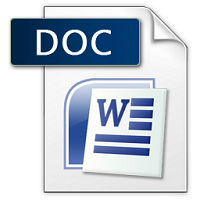₹198.00
Scroll down for Match your questions with Sample
Note- Students need to make Changes before uploading for Avoid similarity issue in turnitin.
Another Option
UNIQUE ASSIGNMENT
0-20% Similarity in turnitin
Price is 700 per assignment
Unique assignment buy via WhatsApp 8755555879
Description
| SESSION | AUG/SEP 2023 |
| PROGRAM | MASTER OF BUSINESS ADMINISTRATION (MBA) |
| SEMESTER | III |
| COURSE CODE & NAME | DHRM301-MANPOWER PLANNING & SOURCING |
Assignment Set – 1
- Explain the Managerial Judgement technique of demand forecasting. 10
Ans 1.
Managerial Judgement in Demand Forecasting
Demand forecasting is a critical aspect of business operations, pivotal in strategic planning, budgeting, and decision-making. Among the various methods utilized for demand forecasting, one stands out for its reliance on human intuition and experience rather than statistical or quantitative models: the Managerial Judgement technique. This method, deeply rooted in the expertise and insights of experienced managers, is an invaluable tool in the arsenal of business forecasting.
Understanding Managerial Its Half solved only
Buy Complete from our online store
https://smuassignment.in/online-store/
MUJ Fully solved assignment available for session SEPT 2023.
Lowest price guarantee with quality.
Charges INR 198 only per assignment. For more information you can get via mail or Whats app also
Mail id is aapkieducation@gmail.com
Our website www.smuassignment.in
After mail, we will reply you instant or maximum
1 hour.
Otherwise you can also contact on our
whatsapp no 8791490301.
Top of Form
- Describe the need for manpower planning with suitable examples. 10
Ans 2.
Manpower planning, also known as human resource planning, is a critical process for any organization, large or small. It involves forecasting and managing the demand and supply of labor to ensure that the right number and type of employees are available when needed. This strategic approach ensures that businesses are well-equipped with a capable workforce to achieve their objectives, both current and future.
Importance of
- State the merits and demerits of E-recruitment. 10
Ans 3.
E-recruitment, also known as online recruitment, is a process where electronic resources, especially the internet, are utilized for attracting, hiring, and retaining job candidates. This method has transformed the recruitment landscape significantly, offering both advantages and challenges.
Merits of E-Recruitment
- Wider Reach
Assignment Set – 2
- Describe the causes of employee turnover in an organization. 10
Ans 4.
Employee turnover in an organization refers to the rate at which employees leave a company and are replaced by new hires. This phenomenon can have significant implications for a business, affecting productivity, morale, and financial stability. Understanding the causes of employee turnover is crucial for any organization aiming to reduce its impact and retain a skilled and motivated workforce.
Work Environment and
- Elaborate the selection process in selecting the right candidate. 10
Ans 5.
Selecting the right candidate for a position is a critical process for any organization, as it significantly impacts the team’s performance, culture, and overall success. This intricate process involves multiple steps, each designed to ensure the best fit between the candidate and the role. Here, we’ll discuss the key stages of this selection process.
Job Analysis and Position
Top of Form
- Describe the techniques of on-the-job training. 10
Ans 6.
On-the-job training (OJT) is a practical approach to skill development where employees learn and apply new knowledge while performing their job tasks. This hands-on strategy is beneficial for both the employer and the employee, as it directly translates learning into practice. Below are key techniques


